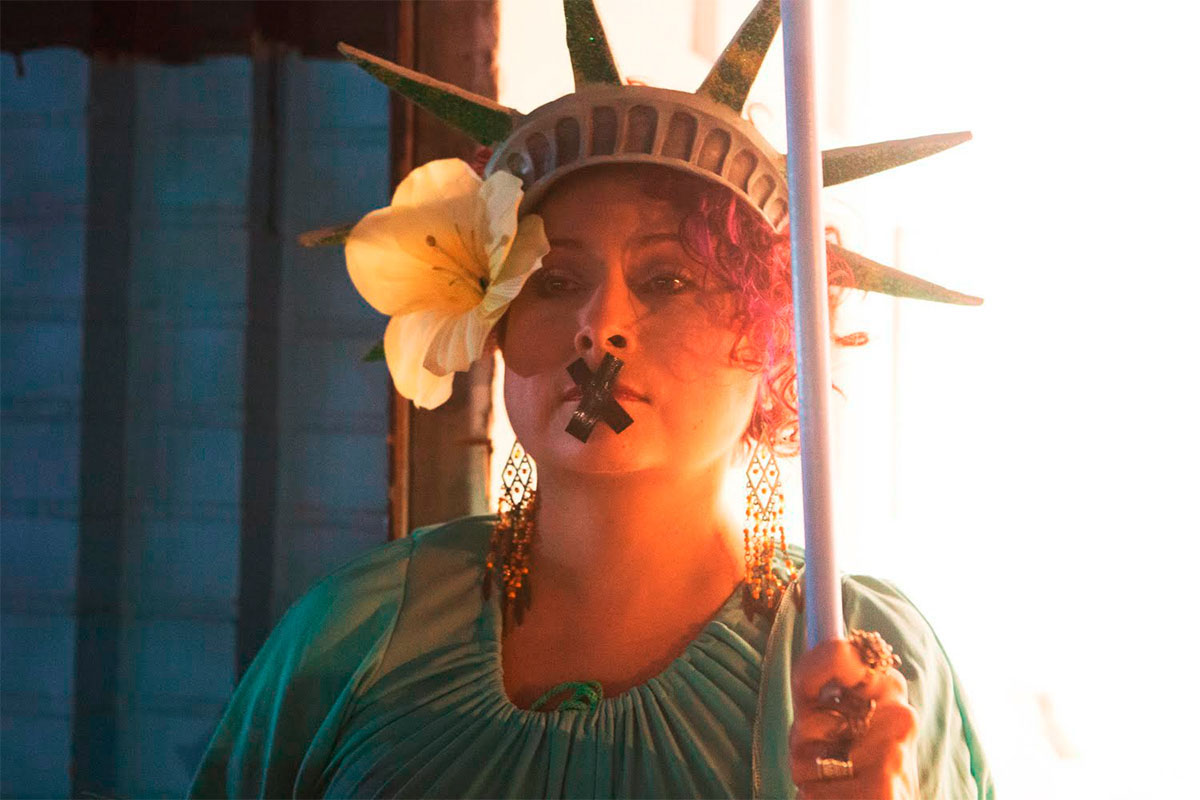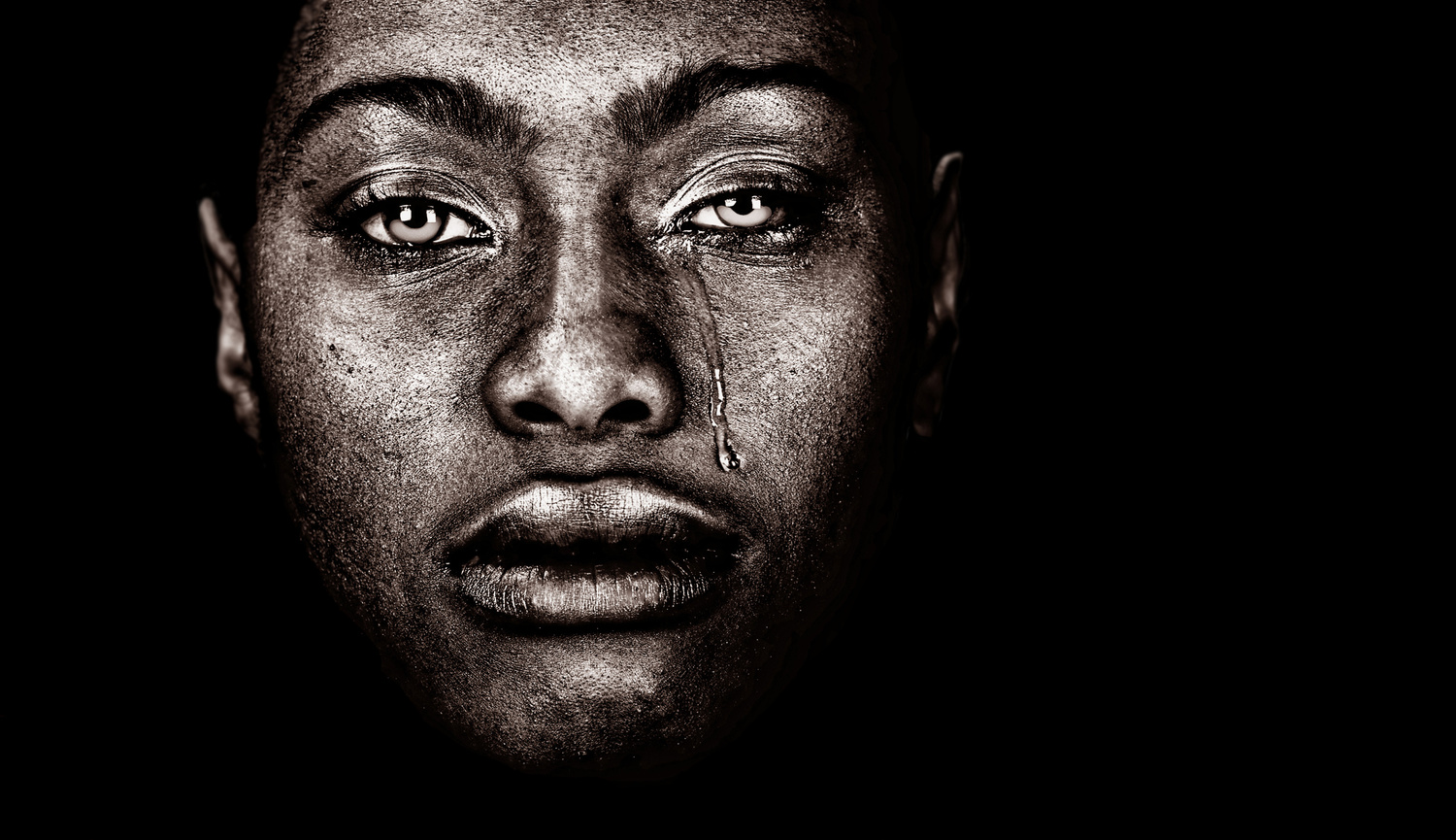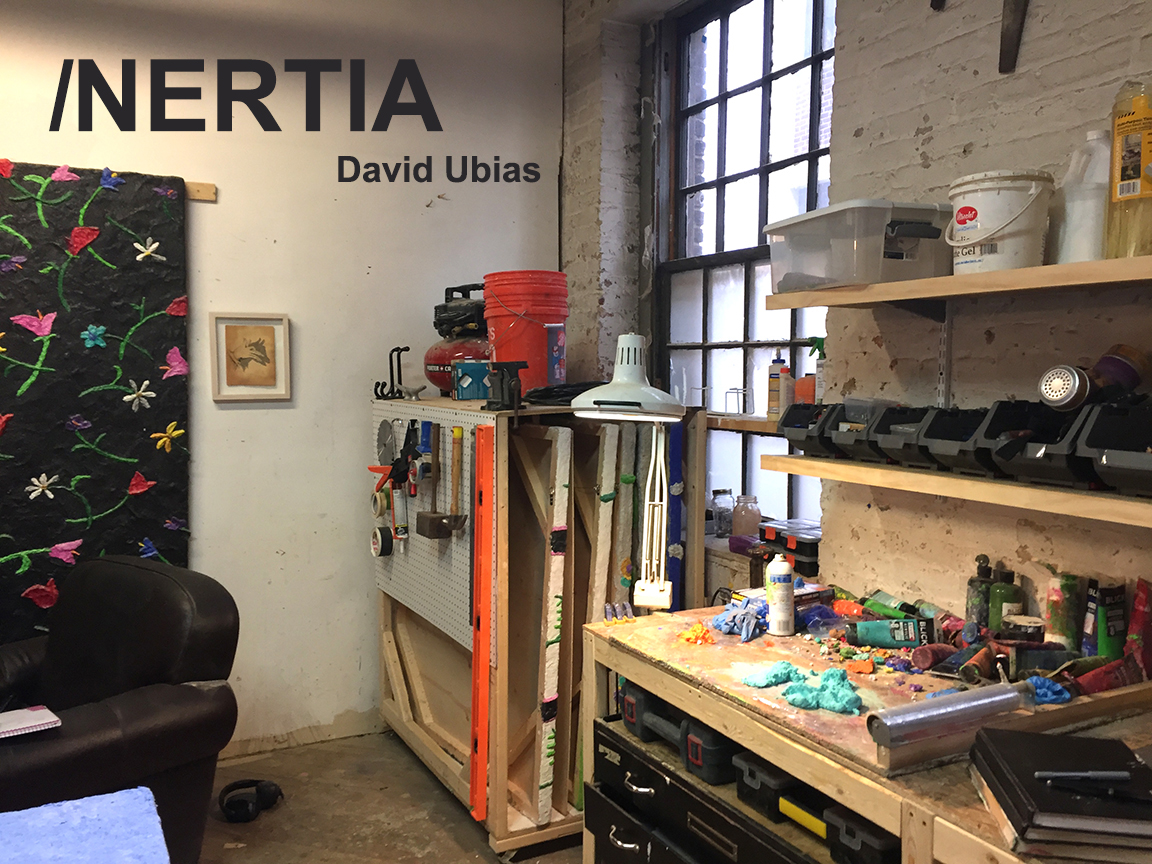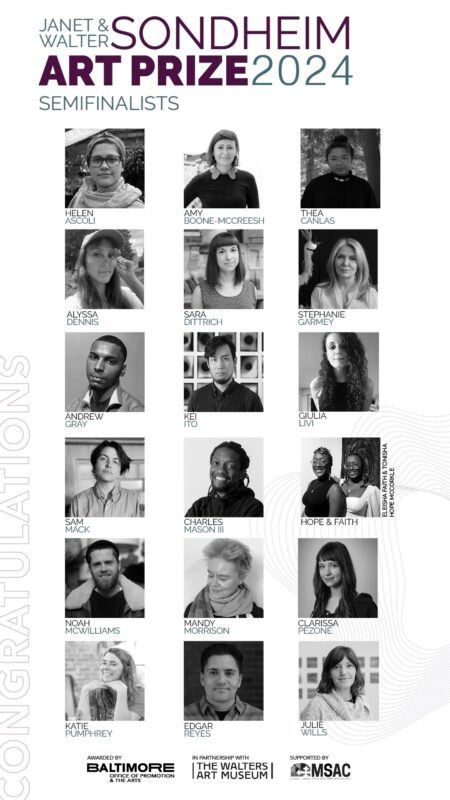Amy Boone-McCreesh talks to Painter David Ubias about Coffee, Naps, and A Philosophy of Simplicity
Artist David Ubias is a Display Coordinator at Anthropologie by day, as well as a visual artist. Ubias has lived in Baltimore since 2007 when he arrived for graduate school at MICA. David and I used to technically share a studio (he had to walk through mine to get to his) though we usually worked on opposing schedules. We both keep studios at Area 405 in Baltimore, and this is where we met to talk about his studio practice and most recent exhibition at ICA Baltimore. Our conversation took place over the holidays; we talked about the importance of naps and coffee and keeping it simple when it comes to making art.
 David Ubias, in his studio, 2017
David Ubias, in his studio, 2017
 David Ubias, The Samplers, 2014, Mixed media on paper
David Ubias, The Samplers, 2014, Mixed media on paper
Where did you grow up?
I like this question because it gives an entryway into an artist’s work. I am the youngest child of six. I grew up in Pasadena, Texas, the largest city connected to Houston. Growing up we would call it Stink-a-dena because it was surrounded by the port of Houston and a lot of refineries, so it smelled really bad. It’s filled with a lot of strip malls and suburban sprawl now. My parents are from South Texas; my mom is from Hidalgo and my dad was born in Alamo which are both right along the Mexican border.

What is the driving force behind your work?
I like to use the phrase “compendium of visual vocabulary.” I keep a current collection of source material for my work. These are mostly drawings transcribed from memory or experiences. I often hobble these drawings into idiosyncratic vignettes. I don’t have to really worry about what my work is going to be or what it looks like, but instead I just experience things and translate them from transcribed experiences.
So it is pretty simple for me; I just live, draw, and make art. I don’t think it needs to be more complicated than that. It is a struggle to not to force yourself to think that the work needs to be about something worthwhile prior to its existence. A lot of the artists I relate to the most work the same way. It’s often hard to admit this, as if there is something wrong with a simple equation in creating art.

What is your biggest struggle in the studio?
I think my biggest struggle is that I make things all day long. I get up really early, I go to work and I am actively making things at work from 6am-3pm. It is a real struggle for me just to keep up the energy. The days I come to the studio after work, I have to take a nap and regroup. This isn’t an extension of what I do at work; it is completely different but there’s a lot of problem solving that happens and if I am tired I will make lackluster decisions. Two coffees and a nap help me switch modes and regroup. Different materials and purpose in the studio also help to define the modes. I feel really fortunate to have a creative job that doesn’t cut into my studio so I am able to do both.

Put the following terms in order of importance to your studio practice: Form, Concept, Process.
My work shape-shifts according to how I am feeling. This work and process could change tomorrow. Different events in my life change what’s happening in the studio and I want to attack that head on and not worry about if it is still looks like what I was making before. I feel like I was really fortunate with this last body of work. I was able to concentrate and have some continuity between the first and last piece. I found a process that I really enjoy and I was able to explore it further than I have really taken any other process before that. It takes time to digest the reasons or meaning for each piece. So I am a little envious of artists that do that right off the bat but I don’t like to have answers before I make something.
I would say Form and Process are tied, concept definitely comes after. With these specific (new) paintings process was very important. I like the square format of these and that was born out of economics of making my own panels. The height of my studio door also dictated the size of these; it is really interesting what determines an artist’s scale and process. I was making larger watercolor pieces on paper and I had a few get damaged in a sprinkler debacle. It made me realize how fragile they were and the extra expense of having to professionally frame them for protection.
I have continuously experimented with paper pulp since grad school and it seemed like the older pulp pieces floating around my studio were impossible to damage. I realized I really wanted something that was durable and could be transported or shipped without crates if need be. They are water resistant and if they chip I can just remix the pulp and make repairs. They are pretty lightweight, and also a standard size. I love working with paper and wanted the work to increase in scale, just in a more tactile and durable way.

Was there ever a time when you felt like you couldn’t keep making work? If so, what helped you to keep going?
Growing up I wasn’t aware you could even be an artist. I didn’t know anyone that made art, and paintings in museums seemed so anonymous and unattainable. Early on my mom would give me the back of her checkbook or a store receipt to draw on so I would quiet down and behave (while in public). Drawing has always been a daily activity and as a kid it was always easy for me to fill up large sketchbooks.
Even now I don’t necessarily set out to make art when I draw but rather just follow through with the impulse. After grad school I struggled to make paintings and sculptures but continued my daily scrawl. A lot of that was about adjusting to a full-time job but also about finding the right studio space. I feel fortunate to have found a studio at Area 405 at that time. It’s been amazingly productive time and really exciting to watch the community grow during my time here.

Do you have any routines, rituals, or coping mechanisms that you use regularly in your studio practice?
Well I really enjoy sitting and looking around the studio at my own pace.
That is difficult when I am preparing for a show because of the frantic timeline. This can be very uncomfortable because the studio is in complete disarray and there is little time for digesting the newer pieces. I just keep pushing forward and often times find myself on thin ice in terms of concepts or imagery.
I made about 25 pieces for the last show at Space Camp (ICA). I felt like what viewers were seeing was also what I was seeing for the first time. I had a couple of group critiques that were really good for me. I was able to talk about the work in an honest and direct way because I did not have the time to create “art-speak.” There’s something unsettling about getting up in front of people and not knowing what was going to leave my mouth but the instantaneous feedback was great.

Another routine: I also have to have coffee in the studio. I am really excited about that coffee shop that is opening at Open Works next door. It’s not even so much about the caffeine, but rather stepping away and rewarding yourself as part of the routine. I started drinking coffee in grad school when I was working on my thesis show. One evening I made a pot and had a completely different body of work by the next morning. Its powers have faded though; I can now drink a cup before bedtime and still fall asleep.

Do you have any hobbies or interests outside of your studio practice that help keep you sane?
Growing up we had a lot of energy, so my parents would put us in a lot of different activities like tennis, football, track, boy scouts, etc. I feel really fortunate to have participated in a variety of physical activities. I found a lot of joy in those things before art making, and I still enjoy a lot of them now. I am particularly partial to hiking and running though. They are a kind of a mental and physical medicine. I feel a correlation between my physical and mental threshold while running as when I am in the studio. You aren’t necessarily working your muscles or joints in your studio but you are accessing the same kind of concentration and endurance to achieve certain goals.
I liked activities that challenged me in a different way and provide a different way of existing outside of the studio. On a lighter note, I really enjoy internet TV. If we can have intelligent thoughtful conversations within our art practice, we can also binge watch Netflix for hours and it’s fine! I feel like I need to be engaged in pop culture somehow, because the studio practice can be quite isolating.
 Ubias’ paper pulp process
Ubias’ paper pulp process
If you had to describe your life to someone out of the arts, how would you do that?
I was glad to see that a lot of my co-workers came to my recent exhibition. As a display coordinator, I have a completely different kind of portfolio that has accrued as a result of the job. I think it is something I have actively tried to keep separate though. People don’t want to talk about art or being an artist if they don’t know you or know anything about you. It’s much easier to talk about my job first.
Corporate displays are something non-artists can relate to more readily. There’s very concrete things that I do like traveling, prototype, budgets, store openings etc. It is a creative gateway that leads into discussing paintings and sculptures.
Even family members can struggle relating to my art. My mom was in education so she understood that I was doing something creative and tried to nurture that. Her house now is like a mini retrospective of old pieces; she never throws anything away. Anything I have given her is framed and on the wall. It’s hard to look at but kind of endearing now. She did not have to fully understand what I was doing in order to appreciate it.
One thing that is really great about this studio building is that a lot of us have known each other for a long time and are very familiar with one another’s art. There’s a concentration of really great work that is being produced here. We are constantly playing off each other whether we are aware of it or not. There is this unspoken healthy visual competition. I cannot walk by someone else’s studio every day and not have it affect me. That was part of my issue with finding the right studio. It provides motivation and normalizes good art.

Do you think the internet is helping or hurting us as artists and people?
Absolutely helping. When I was in undergrad, I was the last crop of students to mail in applications and make physical slides of my work. That was a terrible and expensive process. The internet is definitely helping; it has made things a lot more accessible. Think about how many people are taking photographs now on a daily basis. They are engaged in a creative pursuit but there is ambiguity because of the context. More people are also seeing art! I guess this all depends on what we are being inundated with.
We are being exposed to loads of content from many different voices, but it is still exciting. If you can click on an image and it can make you laugh (memes) that’s great! The downside is all of these experiences we are having online can be obsolete in a short period of time. Things haven’t settled down yet and we are being pulled in a lot of different directions. Its daunting not knowing what social media platforms will endure. Instagram will probably feel like Myspace in a few years. I think these are essentially tools and we still need to figure out what works for the individual for the current moment.
 The Chronic Rebound, paper pulp, 2016
The Chronic Rebound, paper pulp, 2016
Is there anything you would like to promote? Upcoming exhibitions, projects, passions?
I’ll be in a group exhibition next month curated by Dominic Terlizzi at St. Charles Gallery here in Baltimore. I will also be working on a collaboration for Open Space’s Print and Multiple Fair. I am really looking forward to starting some new paintings. I was really happy with my show at ICA Baltimore, they are doing really doing great things here and I was grateful for the opportunity.
 Exhibition view of Onslaught of Obsolescence at ICA / Spacecamp in Baltimore, 2016
Exhibition view of Onslaught of Obsolescence at ICA / Spacecamp in Baltimore, 2016
*********

Keep Going: Inertia is a monthly studio visit blog series that aims to make use of a consistent model and series of questions for visual artists. The content of the studio visits will highlight the struggles of a regular studio practice and the drive to keep working. National and International artists are to be featured to examine different approaches to working as a contemporary artist. Inertia will deliver the content through a compact and easily consumable format, allowing visitors to engage regularly and reliably.
Author Amy Boone-McCreesh is a Baltimore-based artist, writer, and professor.
See more of David Ubias’ work at his website.






